Designers, both veterans and emerging, and retailers discuss the challenge of making sustainable fashion that's sexy, in India

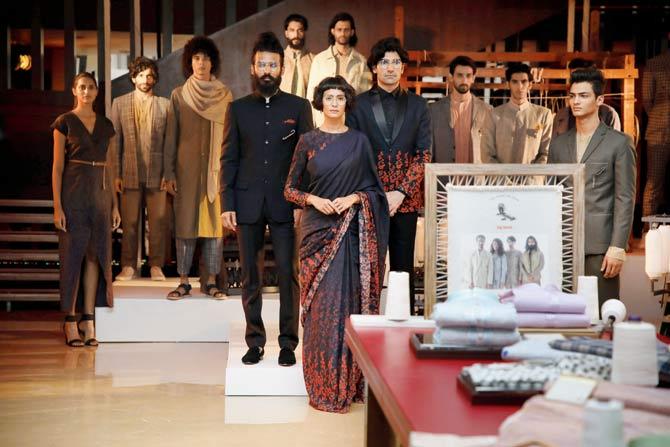
The Story Re-Spun, Raymond's Khadi Project fashion show, was held on April 4 at its flagship store at Breach Candy
The guests gathered at Raymond's Breach Candy store earlier this month for The Story Re-Spun, a showing of the menswear brand's latest line, had one question on their minds - how will the corporate professional accustomed to crease-free workwear warm up to whimsical, organic khadi? But the team at India's oldest fabric retailer knew they had pressed the right button when the campaign around their just-launched Khadi initiative clocked 15 million views in 30 hours on their social media page.
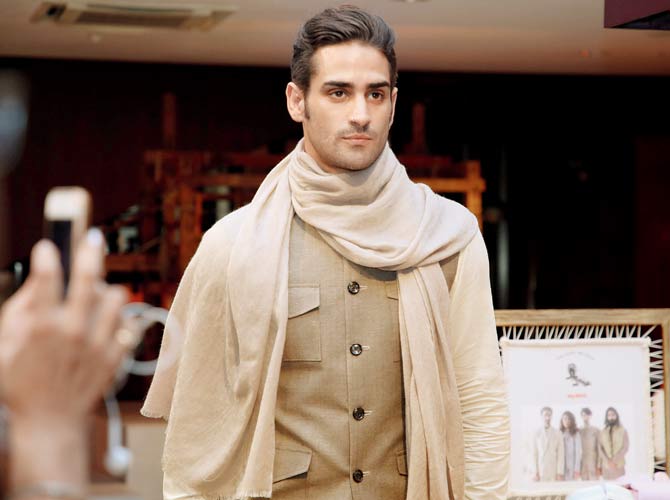
Raymond has launched the collection in association with young designers Gaurav Khanijo, Anuj Bhutani, Ujjawal Dubey and Alan Alexander Kaleekal, and their choice of textile is the "fabric of the nation", which they call universal, and one that transcends age and social barriers. The brand has used its fabric technology expertise to lend khadi, drape and wash-and-wear qualities. The silhouettes and prints which comprise the collection of suits, tuxedos, bandhgalas, bomber jackets, hoodies, shirts and kurtas, are modern and approachable. To complete the look, on offer is a range of khadi accessories - ties, pocket squares, cuff links and shoes.

Varanasi-based textile developer and designer Hemang Agrawal's
"The design and technical teams from Raymond worked extensively with clusters of khadi weavers from across the country for over 12 months to give the fabric a whole new face and form," says Gaurav Mahajan, President-Apparel Business, Raymond. Style observers see Raymond's move as one that seeks to give sustainable fashion a nifty edge, a trait often compromised in the drive to produce ethical fashion, and promote indigenous crafts. Fashion entrepreneur and consultant Sabina Chopra says, in the absence of labels offering appealing sustainable designs at reasonable prices to the young buyer, Raymond's model could be one to ape. "Collaborations [between designers and fabric manufacturers] could be the way forward if we are to impact purchase," she thinks.

Summer 2018 collection reimagined Benarasi textiles to make minis and box-pleated dresses, and used Tanchoi and Katarwan weaving techniques to create the houndstooth pattern
While the world over, sustainable fashion champions fair trade, local techniques of production, and reuse and upcyling, in India, an ancient tradition of craft has moved focus to the revival of textiles. That it is currently also a political talking point, makes it complicated. "In India, we stress on sustainable fashion from an aesthetic point of view, motivated by the revival of textiles. There's too much of one thing, without regard for price point, the young customer demographic, fit or design," feels Delhi-based designer Arjun Saluja. He is currently occupied with creating a collection from upcycled cotton, with a focus on minimum fabric wastage. And so, the sustainable cause is a subtle story behind the collection, not its central identity.
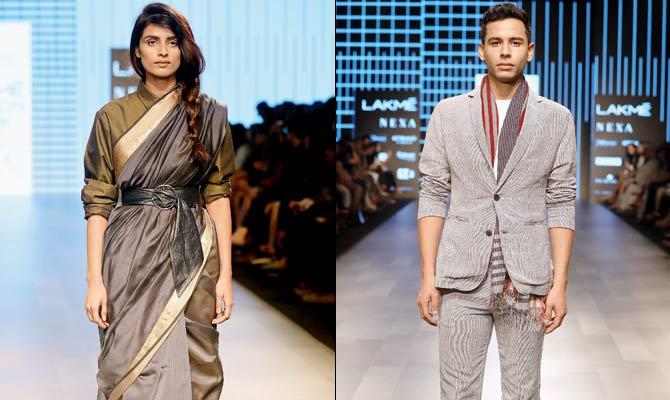
After showing at LFW S/R 2018, The Good Loom showcased its summer collection of casual menswear and sarees, designed with a special focus on ethical production and getting the right fit at ARTISANS' gallery at Kala Ghoda last week
Hemang Agrawal, textile developer and designer from Varanasi, agrees. "Shoppers buy basis design and style. The ethical credentials of a label come later," he says. Living in a city that's at the heart of the ongoing revival of Benarasi weaves, he speaks of fly-by-night designers jumping in to claim to own the cause.
Agrawal decided it was time to rewrite the script; one that tested the sprightly, dressy competence of time-honoured Indian weaves. Un-Revive, his summer 2018 collection, included modern-day essentials such as minis Mary Quant-would approve, trench and box-pleated dresses, maxis, cropped pants and palazzos. He pinned his interest on the sustainability mast by working with master weavers from his hometown to create tartan checks, polka dots, houndstooth and geometric patterns using the Tanchoi and Katarwan techniques. "Why can't handlooms be young?" he says, explaining the thought behind using one of India's oldest textiles to create plucky, young designs.
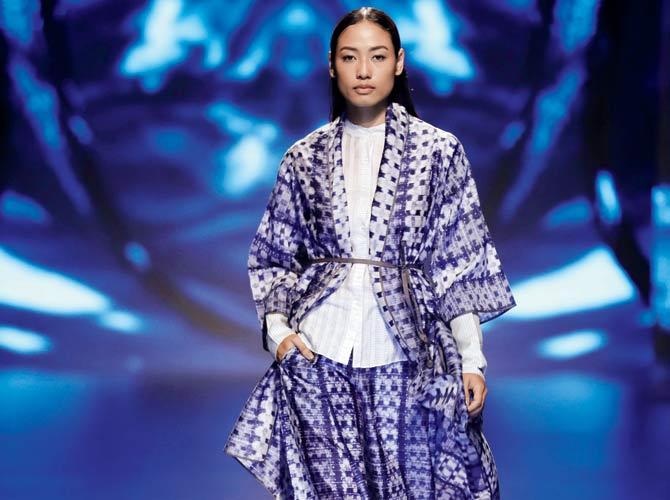
Chopra wonders why sustainable clothes are devoid of colour or refined cut. A chunk of craft practitioners focusing solely on revival of textiles are taking for granted the design element of clothing. "Hence, the final tailored garment tends to be weak on cut, giving us tent-like, boring clothes…who decided colour is not cool?" she says. Veteran designer duo David Abraham and Rakesh Thakore of A&T push the boundaries when the former says, "Theoretically, you could do anything with craft, even design a bikini or hot pants. The trouble is, designers are not intervening into developing their own textiles. Ideally, they should."
A&T made a compelling case for ethics-meets-aesthetics with the recent #SadakSmart collection. Encouraged by DIY countercultural streetwear trend, the range looked at indigenous shapes, such as the salwar, kameez, saree and ghagra, and tipped them in favour of teasing everyday styles using updated versions of sequined Chanderi, aari embroidery, and floral patterns inspired by the great Indian chintz.
Not so long ago, anti-fit fashion found its moment internationally, and India, a land of drapes, was more than happy. The unstructured silhouette became an approved form of anti-fit, and handloom - one of the heroes of sustainable fashion - tagged along. Saluja points out that a change in design will take place only when we break the myth that hand-woven equals anti-fit. "The latter is about how you play with both, fabric and body - kiss it or turn it away from skin. Lend it form or leave it formless. Fabric development plus emphasis on silhouettes is key."
And so, good design is both the problem and the solution. Sustain, a 12-year-old apparel vertical of the Good Earth brand of luxury lifestyle, insists on being known as classically Indian. "We are not interested in being hip or cool. But we understand the value of offering modern clothing options that highlight India's incredible workmanship. It might be difficult to make khadi glamorous, so we've started working with Bhagalpuri silks for evening wear. Similarly, we've updated traditional embroideries by combining them with fresher colour ways," says Deepshikha Khanna, head of Sustain.
Rozana, a sub-brand of Sustain, positions itself as daily tonic for everyday wardrobe woes. Aimed at younger clients, it's a line of separates. Sassy shirtdresses, long and short kurtas, lehengas, kalidar kurtas and Hiba trousers are made in malkha cotton, khadi and muslin, priced between Rs 4,500 and Rs 22,000. Interestingly, timely interest by two of India's biggest fashion weeks has plucked the sustainable fashion lobbyists from their craft-based address to dazzling runways with dedicated show slots. The Autumn/Winter 2017 edition of Amazon India Fashion Week addressed the relevance of handlooms, while highlighting sustainable businesses with, The Handloom School. Supported by Good Earth, nine designers including Sanjay Garg, Neeru Kumar, Gaurav Jai Gupta, Rajesh Pratap Singh, Rohit Bal, Péro and Ekà worked with weavers and textiles designers under the watchful eye of textile revivalist Sally Holkar.
For the last seven years, Lakmé Fashion Week has dedicated a day towards the promotion of Indian crafts, recycling and re-purposing. "It started as a means to encourage dialogue on sustainable values. And with initiatives like #CraftisCool, we are working towards creating viable collections that appeal to high street sensibility," says Gautam Vazirani, fashion curator, IMG-Reliance, organisers of LFW.
This season, LFW collaborated with The Good Loom, an artisanal brand from GoCoop, (the first e-commerce store to win a national award for 'Marketing of Handlooms') to present a selection of smart, casual menswear and sarees, with a special focus on ethical production and getting the right fit. It was a sincere attempt at bridging the gap between how the country's Instagram generation interprets fashion and its duet with indigenous craftsmanship. "That sustainable fashion should be sexy, and not stop at mundane or homogeneous, is now our agenda. The millennials don't see themselves dressed in kaftans or anti-fit shapes," adds Vazirani. But he's up against a challenge. Designers often tell him of the 35+ consumer loving the anti-fit way. Saluja has an answer to that. "Let's not be blinded by the revival manifesto. Sixty per cent of India's population is under 35, and they are seeking stylish ready-to-wear options."
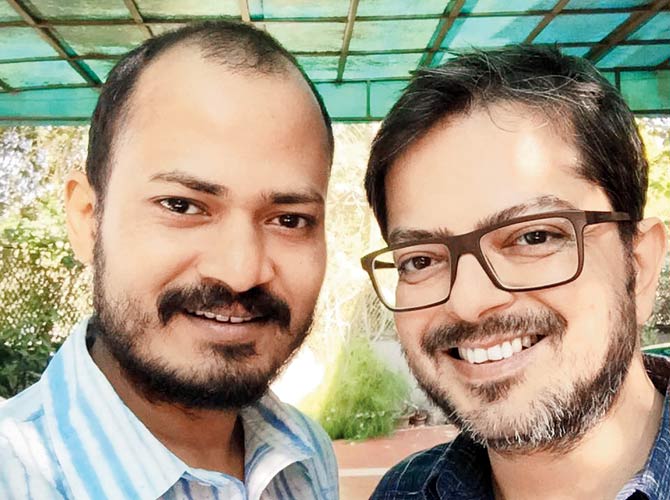
Challenge of handlooms: Colour forecast doesn't figure in our scheme
For 11-year-old label, Amrich, led by Delhi-based Amit Vijaya and Richard Pandav, instead of reinforcing a divide between ethical and non-ethical consumers, they prefer to be known as a Western wear brand of separates, infused with enough versatility to be worn in Indian styles. "Working with handlooms is not without its unique set of challenges. For example, we can't afford to follow the colour forecast, since we work with natural dyes. Plus, we work with tricky timelines. We have to work two years in advance since there is lot of back and forth between craftsmen and our design team," says Vijaya. Luckily, the two design and develop their signature shibori in-house, making it possible to control how the garment is cut. "It also allows us to keep the price affordable. The shibori range starts at Rs 13,000," he adds.
Catch up on all the latest Mumbai news, crime news, current affairs, and also a complete guide on Mumbai from food to things to do and events across the city here. Also download the new mid-day Android and iOS apps to get latest updates
 Subscribe today by clicking the link and stay updated with the latest news!" Click here!
Subscribe today by clicking the link and stay updated with the latest news!" Click here!









